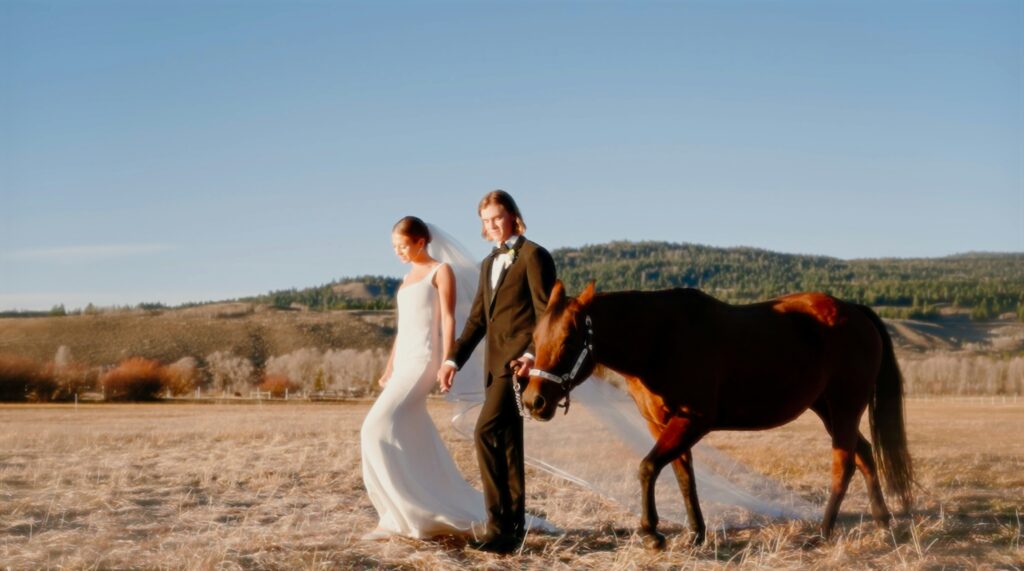Planning your big day involves countless decisions, but creating a wedding photography timeline is crucial for capturing every precious moment while keeping your day flowing smoothly. Understanding how to allocate time for each portion makes the difference between rushed snapshots and breathtaking images you’ll cherish forever.
Why a Wedding Photography Timeline Matters
Your wedding day timeline serves as the blueprint for capturing authentic memories. Couples who plan their photography schedule end up with more diverse, relaxed, and beautiful wedding photos. A thoughtful timeline accounts for natural lighting, travel time, and those unexpected moments that make weddings magical.
A well-planned timeline lets you enjoy quality time with your future spouse, family members, and guests. Instead of frantically wondering if you’ve photographed all the bridesmaids or captured your engagement ring details, you can relax knowing everything’s scheduled. This helps your wedding photographer work efficiently, delivering better photography coverage and more candid moments.
Understanding Your Wedding Day Flow
Every wedding is unique, and your photography timeline should reflect your preferences, cultural traditions, and venue logistics. Some couples prefer a first look before the ceremony, while others choose to see each other at the altar. These decisions fundamentally shape your entire day.
Consider the flow between different locations. If your ceremony venue is far from your reception venue, build in adequate travel time. Multiple locations for portraits might sound romantic, but they consume precious time. Think strategically about whether staying in one location makes more sense than jumping between different locations.
Key Time Blocks to Schedule
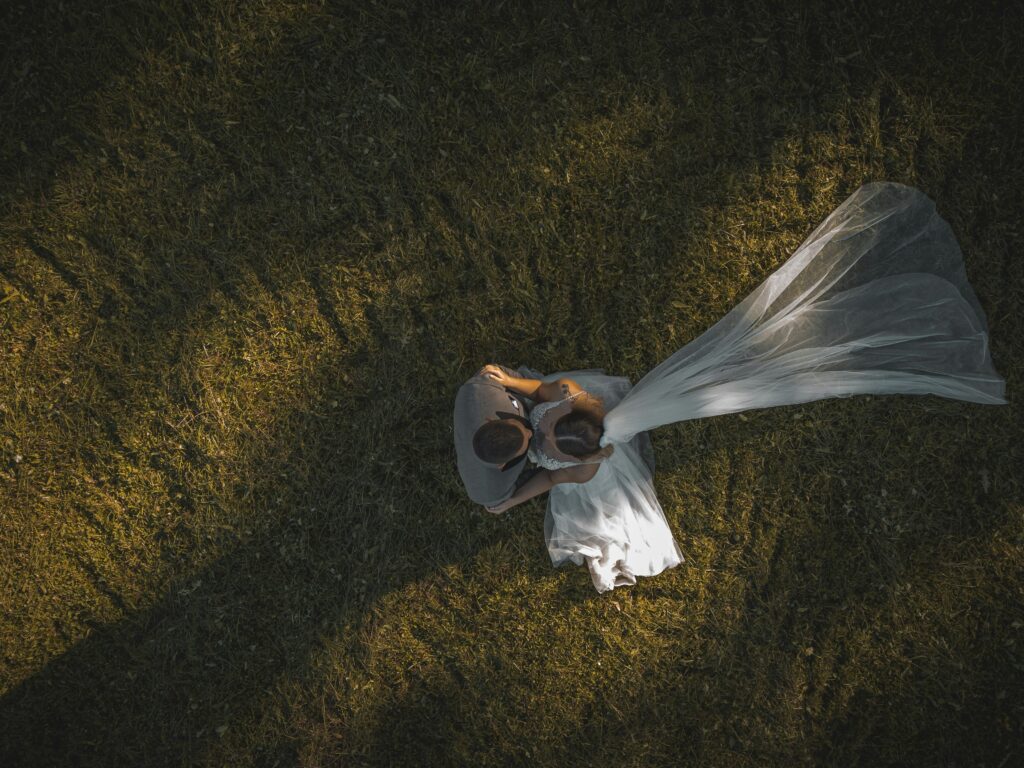
Breaking down your wedding day into strategic time blocks ensures you capture every important moment without feeling rushed. Here are the essential portions to include in your wedding photography timeline.
Getting Ready Photos (1-2 Hours)
Getting ready photos offer intimate and emotional photography opportunities. Plan for your wedding photographer to arrive when hair and makeup are 75% complete. This captures excitement without documenting the entire process. Ready photos should include detail shots of your dress, shoes, jewelry, and engagement ring, plus candid moments with your bridal party.
Groom portraits deserve equal attention. Whether preparing at the same place or separately, allocate 30-45 minutes. The best images come from relaxed interactions—adjusting boutonnieres, sharing toasts with groomsmen, or reading notes from their future spouse. A second photographer can simultaneously capture both partners’ preparations.
First Look and Couple Portraits (30-45 Minutes)
A first look offers timeline advantages and creates deeply emotional photographs. This private moment allows genuine reactions and extended couple portraits before the ceremony. Without guests waiting, you can capture photos at multiple locations or savor quality time together. Many couples find seeing each other beforehand calms nerves.
If planning a couple of portraits after the ceremony, schedule 20-30 minutes immediately following your ceremony exit. Golden hour before sunset provides magical lighting, so coordinate with your wedding photographer about sunset time. Understanding how to pose naturally makes these sessions more enjoyable and authentic.
Family Photos and Bridal Party Shots (45-60 Minutes)
Family portraits are essential but challenging to execute smoothly. Create a detailed shot list including immediate family, extended family, grandparents, couple photos, parents couple portraits, and siblings couple images. Provide this list two weeks before your wedding day, and designate someone to gather people quickly. This reduces 90 minutes into an efficient 30-40 minute session.
Recommended groupings for family photos:
- Bride with parents
- Groom with parents
- Couple with the bride’s immediate family
- Couple with the groom’s immediate family
- Couple with both families together
- Grandparents couple shots with the bride and groom
- Siblings couple photos with newlyweds
- Extended family group shots (if desired)
Bridal party portraits work best when everyone knows where and when. Allocate 20-30 minutes for creative shots, including photos with all the bridesmaids, groomsmen separately, and the full wedding party together. The most memorable bridal party portraits capture both formal poses and fun, relaxed moments.
Ceremony Coverage (30-60 Minutes)
The wedding ceremony typically lasts 20-45 minutes, but includes buffer time. Your photographer needs to arrive at the ceremony location 30 minutes early for detail photos of the venue, arriving guests, and special decorations. After the ceremony exit, allow 5-10 minutes for congratulations and joyful candid moments with family members.
Cocktail Hour and Reception Details
The cocktail hour provides opportunities for capturing guests mingling, venue details, and remaining formal portraits. If you opted against a first look, this is when you’ll complete a couple of portraits and family photos—though this feels rushed with guests waiting. Most photographers recommend completing all formal portraits before the ceremony.
Once the reception begins, your wedding photography timeline becomes more fluid. Essential moments include grand entrance, first dance, parent dances, cake cutting, toasts, and bouquet toss. The best reception photos often come from unscripted moments on the dance floor, guests laughing, or quiet conversations. Trust your wedding photographer to capture these candid moments while tracking planned events.
Sample Wedding Day Timeline
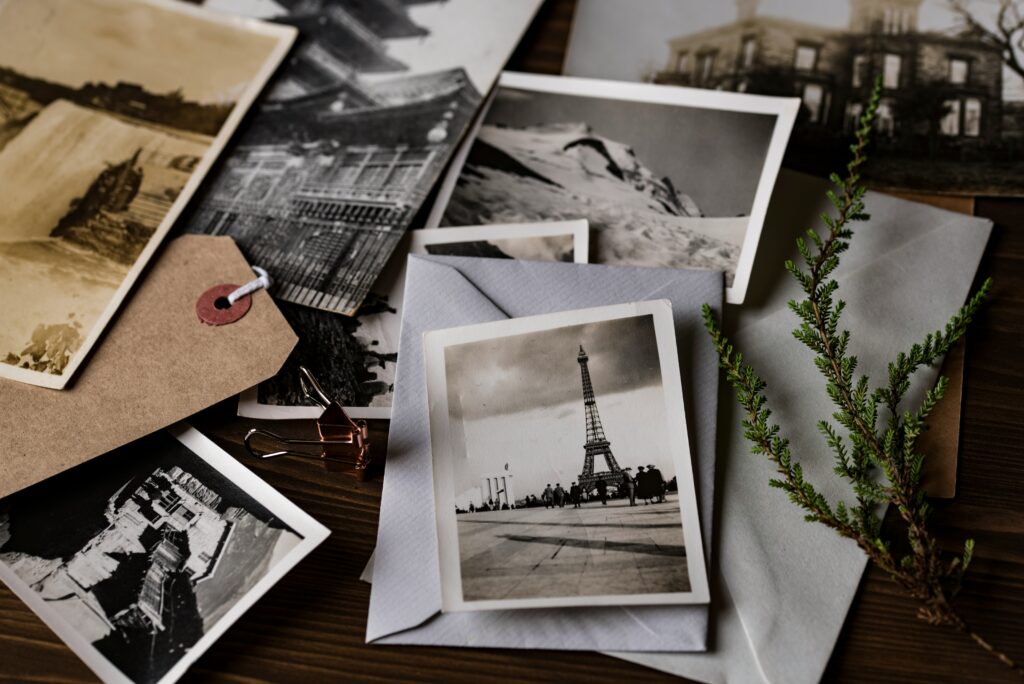
Using a structured sample timeline helps you visualize how your wedding day will unfold. Here’s an ultimate wedding photography timeline for an afternoon ceremony:
Morning & Afternoon:
- 11:00 AM – Photographer arrives for bride’s getting ready photos
- 11:00 AM – Second photographer with groom’s preparations
- 12:30 PM – Detail photos of dress, shoes, rings, and invitations
- 1:00 PM – First look at ceremony venue gardens
- 1:30 PM – Couple portraits in various locations
- 2:00 PM – Bridal party portraits
- 2:30 PM – Family portraits with immediate family and extended family
- 3:30 PM – Guests arrive; photographer captures ceremony location details
- 4:00 PM – Wedding ceremony begins
- 4:30 PM – Ceremony exit and congratulations
- 4:45 PM – Cocktail hour begins; photographer captures reception venue details
Evening:
- 5:45 PM – Sunset portraits (if weather permits)
- 6:00 PM – Grand entrance into reception
- 6:15 PM – First dance
- 6:20 PM – Parent dances
- 6:30 PM – Dinner service (photographer captures candid table moments)
- 7:30 PM – Toasts and speeches
- 8:00 PM – Cake cutting
- 8:15 PM – Open dance floor
- 9:30 PM – Bouquet and garter toss
- 10:30 PM – Photographer departure (8-10 hours of photography coverage)
This sample wedding day timeline shows how realistic time blocks create a relaxed pace. Notice the buffer time between events—this flexibility allows spontaneous moments without constant clock-watching.
Building in Buffer Time
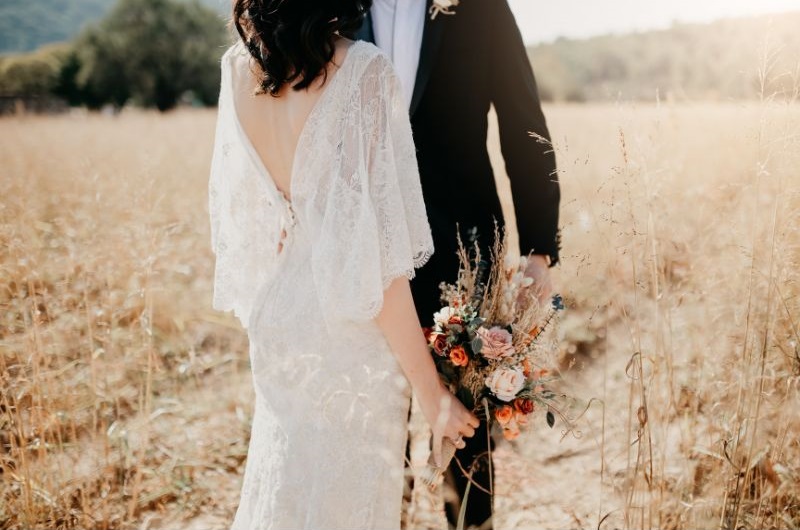
Creating a wedding timeline with back-to-back events and zero breathing room is a common mistake. Real weddings rarely run exactly on schedule—makeup takes longer, traffic delays happen, or emotional moments need extra time. Building 10-15 minute buffers prevents delays from cascading and reduces stress.
Travel time deserves special consideration. A quick 10-minute drive easily becomes 25 minutes when factoring in loading cars, traffic, and parking at the right location. Most photographers recommend adding 50% more time than the GPS suggests. If possible, choose venues that are close together to maximize time for photos rather than transportation.
Weather contingencies also require buffer time. Having a backup plan if rain threatens includes knowing where you’ll take portraits indoors. Flexibility is key—some of the most dramatic wedding photos happen when couples embrace unexpected weather.
Working with Your Wedding Photographer on Timeline Planning
Your wedding photographer is your greatest ally in creating an effective timeline. Choosing the right professional means finding someone who produces beautiful images and understands logistics. Schedule a timeline consultation 6-8 weeks before your wedding day to review plans and get expert input.
Discuss must-have shots, family dynamics that might affect group photos, and special moments you want captured. Be honest about whether you want extensive formal portraits or prefer documentary-style coverage. These conversations help your photographer allocate time appropriately and set realistic expectations.
Keep your photographer updated as your wedding day approaches. Share timeline changes, family situations they should know, or additional shots you’d like. The more information they have, the better they can ensure nothing falls through the cracks.
Timeline Errors That Ruin Wedding Photos
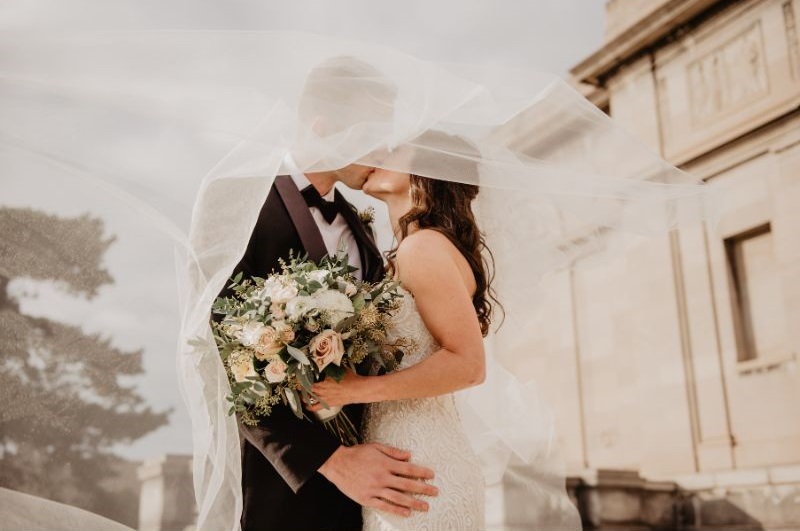
Underestimating how long family photos take is the most frequent error. Gathering extended family members, positioning everyone, and taking portraits with various combinations easily consumes 45-60 minutes. Without a detailed shot list and someone to wrangle family members, this portion spirals out of control. Keep family portraits focused on the immediate family and one or two extended family groupings.
Another pitfall is scheduling the ceremony too close to sunset without accounting for couple portraits. If you want dreamy golden hour images, work backward from sunset time and ensure you have 20-30 minutes available. This might mean starting your ceremony earlier or skipping cocktail hour to capture photos during optimal lighting.
Underestimating getting ready photos leads to regret. While you don’t need your photographer present for the entire four-hour hair and makeup process, having them arrive for the final hour ensures you capture detail photos, mother-daughter moments, and the excitement of putting on your wedding dress.
Sunset and Golden Hour Considerations
Natural lighting dramatically impacts wedding photo quality. According to The Knot’s photography experts, golden hour—the period about an hour before sunset—provides the most flattering, romantic light. Check the exact sunset time for your wedding day and schedule 20-30 minutes during that window for couple portraits.
If your timeline doesn’t allow for sunset portraits, don’t worry. Skilled photographers create stunning images in any lighting. Morning ceremonies provide beautiful soft light, while midday sun creates dramatic shadows when used creatively. Looking natural and relaxed matters more than perfect lighting.
Balancing Photos and Celebration on Your Big Day
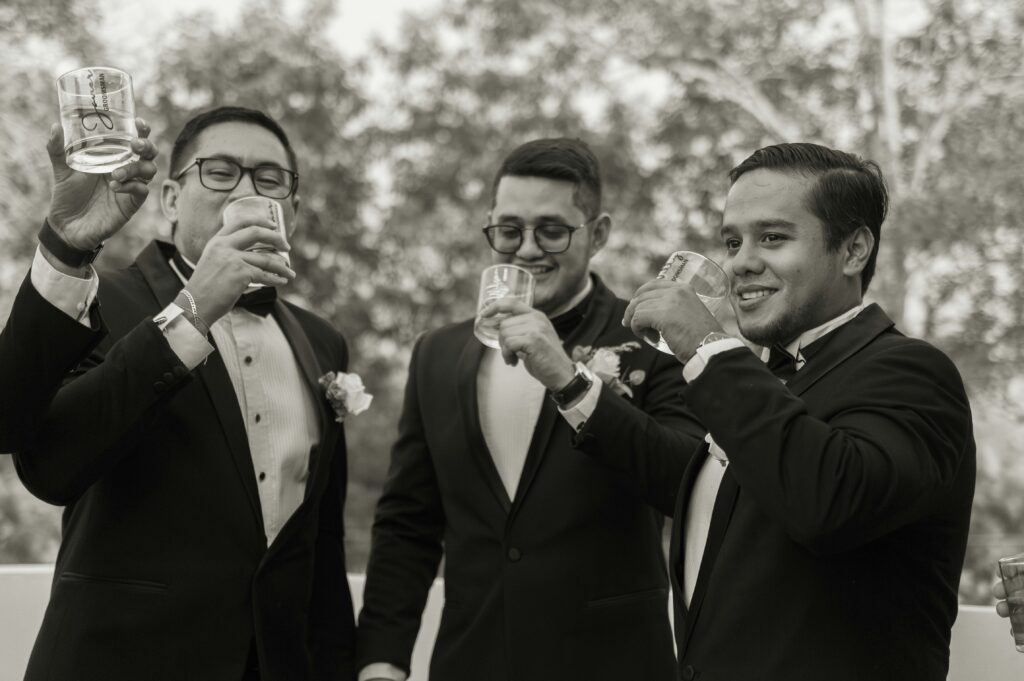
Beyond timeline logistics, think about how you want to experience your big day. Some couples prefer snapping photos at different locations to create variety in their wedding album, while others prioritize spending quality time with guests. Neither approach is wrong—your timeline should reflect your values.
Consider which moments matter most. Do you want extended bridal party shots showing genuine friendships? Would you rather have more time on the dance floor, celebrating with family? Should your photographer focus on capturing candid moments during cocktail hour, or do you want all formal portraits completed beforehand? These decisions shape your entire day’s flow.
The best wedding timelines balance photography needs with celebration enjoyment. You’re not just creating a shot list—you’re designing how you’ll experience one of life’s most meaningful days. When planned thoughtfully, your timeline becomes invisible, allowing you to be fully present while ensuring every important moment gets captured.
How Venue Logistics Affect Your Photography Timeline
Venue logistics significantly impact your photography timeline. Some ceremony venues have restrictions on where photographers can stand or how long you can use specific locations for portraits. Reception venues might have strict timeline requirements for dinner service, cake cutting, or when the dance floor opens. Understanding these constraints early helps you plan realistically.
Visit your ceremony location and reception venue with your photographer if possible. Scout ideal portrait locations, identify backup spots if the weather doesn’t cooperate, and note how natural light changes throughout the day. This preparation ensures everyone knows exactly where to go for each portion of your timeline, eliminating wasted time wandering around looking for the right location.
Some venues offer getting-ready rooms, which can streamline your timeline by keeping everything in one location. Others might require you to prepare elsewhere and arrive at the ceremony venue already dressed. Factor these logistics into your planning, especially when estimating travel time between locations.
Sharing Your Timeline with Your Wedding Party
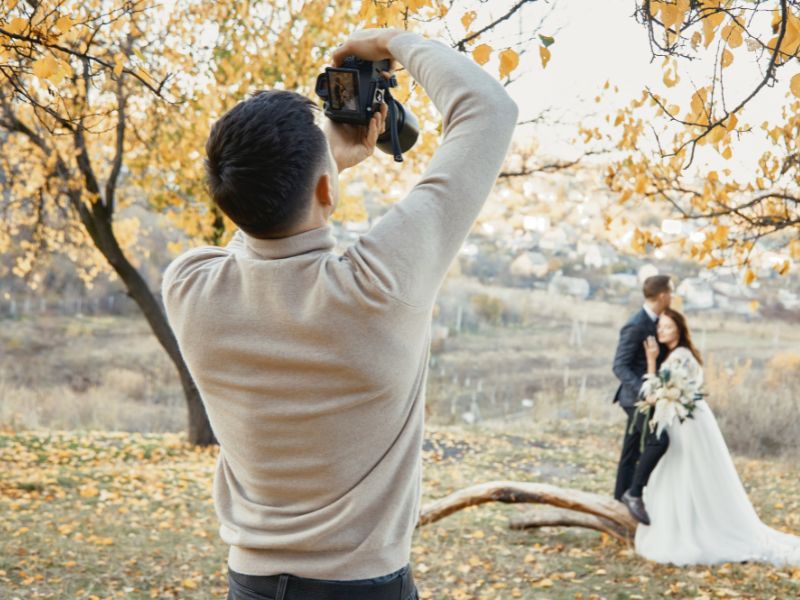
Clear communication makes timeline planning successful. Share your sample timeline with everyone involved—your wedding party, immediate family, vendors, and venue coordinator. When bridal party members know they need to be ready for photos at 2:00 PM, they can plan accordingly. When family members understand they’ll be needed for portraits immediately after the ceremony exit, they won’t wander off.
Designate a point person for each major group. One bridesmaid can help gather all the bridesmaids for photos. A groomsman can ensure all the groom’s family members know where to be. This delegation prevents your photographer from hunting down people, which wastes precious time.
Consider creating a detailed shot list that goes beyond just timing. Specify which family members you want in which combinations, note any special requests for bridal party portraits, and identify must-have detail shots. This level of planning transforms a vague “family photos” time block into an efficient, organized session.
Your Next Steps in Timeline Planning
Creating a thoughtful wedding photography timeline transforms your wedding day from a rushed checklist into a memorable celebration. By understanding realistic timeframes, building in buffer time, and coordinating with your photographer, you ensure comprehensive coverage of every important moment. This timeline serves you—it should reduce stress, not create it.
The investment in planning your photography timeline pays dividends in image quality and variety. When you look back on your wedding photos years from now, you’ll appreciate having documentation of getting ready with your wedding party, intimate couple portraits without time pressure, complete family portraits including extended family, and unscripted candid moments showcasing genuine emotions.
Ready to start planning your dream wedding day?
The team at Celeste Wedding Photography specializes in creating personalized timelines that balance stunning photography with an enjoyable, stress-free experience. With years of photographing weddings across diverse venues and styles, they understand how to maximize every moment while ensuring you savor your big day.
Explore their portfolio to see how thoughtful timeline planning translates into breathtaking wedding photos, then reach out to discuss documenting your unique love story.
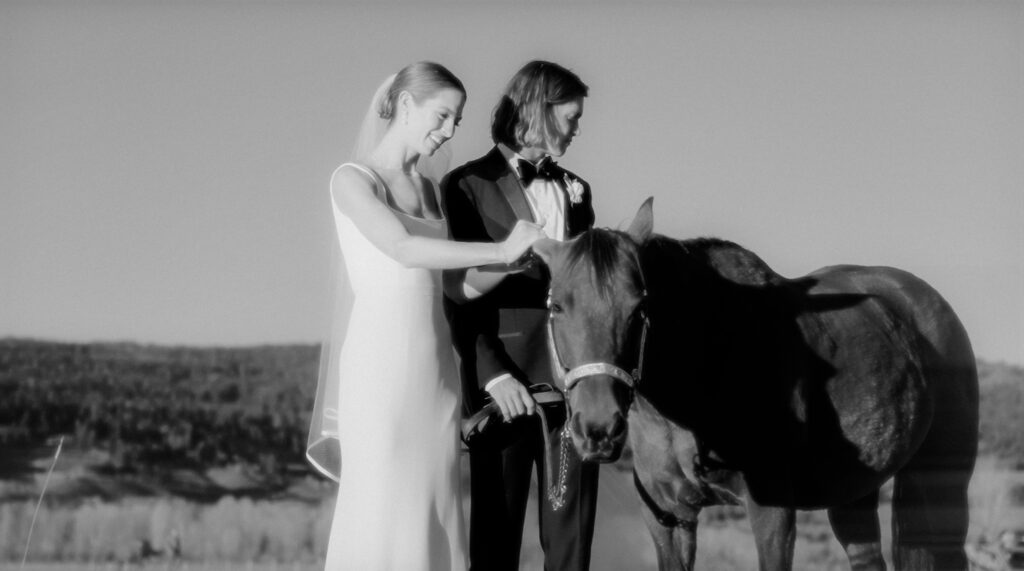
Frequently Asked Questions
How many hours of photography coverage do I need for my wedding?
According to WeddingWire’s industry survey, most weddings require 8-10 hours of coverage. If you’re doing a first look and completing formal portraits before the ceremony, 8 hours typically suffice. For coverage from preparations through your exit or events across multiple locations, consider 10-12 hours.
Should we do a first look or wait until the ceremony?
A first look offers timeline advantages—more time for relaxed couple portraits, completing family photos before the ceremony, and reducing stress. However, if the traditional ceremony reveal is important to you, plan an extended time after the ceremony for portraits. Consider your priorities: more time with guests versus more diverse photography locations.
When is the best time to take family portraits?
Immediately after the ceremony, exit when everyone is gathered at the ceremony location. This 30-45 minute window allows efficient capture of immediate family, extended family, and various combinations. If doing a first look, you can complete family photos beforehand. Either way, create a detailed shot list and designate someone to gather family members quickly.
How do we make time for sunset photos during our reception?
Schedule a 20-30 minute break during golden hour, typically during dinner service, when you won’t be missed as much. Coordinate the exact sunset time with your photographer and inform your DJ or coordinator that you’ll step out briefly. The stunning images are worth the brief absence.
What happens if our timeline gets off schedule during the wedding day?
Built-in 10-15 minute buffers help prevent cascading delays. If you fall behind, communicate with your photographer about priorities—they can help decide what to condense while capturing essential moments. Stay flexible and trust your photographer will adapt to ensure beautiful documentation.
